We present an earphone with a peer-reviewed sound signature that should by right, please everyone. With the age of research comes the Harman tuning, and the Tanchjim Oxygen is one of the fruits of this endeavor.
Air. Water. Food. Earphones. The universe is pretty clear about what is absolutely needed for living organisms to survive, and has given warning signs should your life be threatened. We have come so far and lived so long because we react to thirst, hunger, breathlessness, and deafening silence. The absence of music just worries me to death, you know?
Thankfully, many are on the same page as me. We slave all month to earn that paycheck and spend lavishly on food, beverages and in-ear monitors (IEMs). Luckily the air is free, but not so fast.
Tanchjim likes to think that their greatest creation, dubbed the Oxygen, is as essential as air itself.
Who’s Jim?
But who are they? Tanchjim (probably pronounced “thanks Jim”) is a Chinese company formed in 2015 and specialize in IEMs. They create their IEMs based on two tenets, that is cleanness of build and sound quality. To achieve the former, their IEMs are packed in neat, minimalist boxes. For the latter, they turn to the Harman Target Response Curve.
- Good, clean packaging
- Good, clean design
- Lightweight and durable
- Pleasing, inoffensive tuning
- Sub-bass response
- Mids tuning and timbre
- Excellent imaging capability
- Sparse ear tips
- Shells prone to scratches
- Short nozzles, needs tip-rolling for best fit
- Poor isolation
- Bass lacks slam and definition
- Recessed upper bass and lower mids
- Rolled-off, overly smooth treble
- Overall detail and transparency
- Small soundstage
Breathe With Me
Today we look at Tanchjim’s flagship IEM, the Oxygen. Using a single 9.2mm graphene dynamic driver contained in a stainless steel shell, this Harman-neutral IEM represents the fulfilment of Tanchjim’s philosophy. A simple and pure IEM made to please your eyes and ears. They definitely turn heads, but will they move mountains?
The Oxygen is currently available at Apos Audio. I would like to thank Apos for the review sample and tremendously fast shipping. It has been a pleasure dealing with them.
Equipment Used:
DAP
IEMs
Albums
- Aaron Neville – Warm Your Heart
- Celine Dion – The Colour of my Love
- Fleetwood Mac – Tango in the Night
- Macklemore & Ryan Lewis – The Heist
- Queen – Greatest Hits I
- Roxette – A Collection of Roxette Hits!
- Sade – Soldier of Love
- Taylor Swift – Lover
- Tears for Fears – Songs from the Big Chair
- The Eagles – Hell Freezes Over
Technical Specifications
- Driver: 9.2mm graphene dynamic driver
- Sensitivity: 110dB/mW
- Impedance: 32Ω
- Frequency Response: 10Hz – 40kHz
- Connector: 2pin 0.78mm
- Plug: 3.5mm gold-plated straight plug
- Cable Length: 1.2m
- Cable Material: Silver-plated oxygen-free copper (OFC)
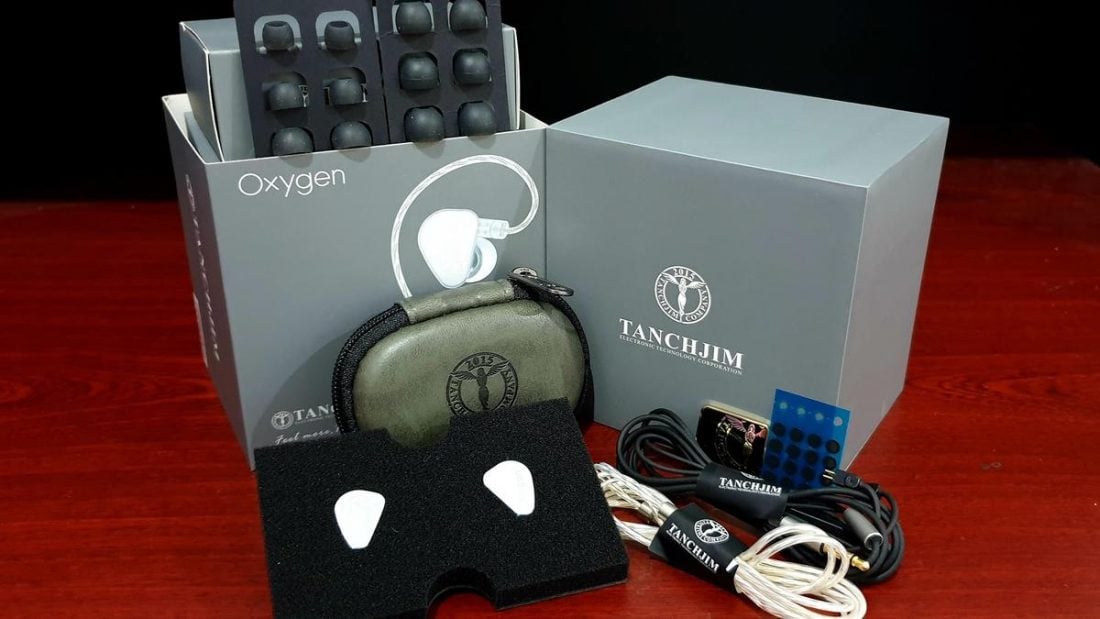
Packaging and Accessories
Tanchjim loves hygiene. Besides (probably) washing their hands before and after assembling their prized IEMs, a lot of thought was given to the retail package. To project the image of cleanliness, who better to draw inspiration from than the masters of packaging, Apple? The gray Oxygen box resembles iPods of old, with few words, big graphics and catchy names (except Tanchjim, can’t help you there).
A full unboxing and uncovering of the layers reveals a moderately well-stocked accessory set. They are:
- 6 pairs of silicone ear tips in assorted sizes
- Zippered carry case
- A silver-plated OFC cable
- A microphone cable
- A metal sticker
- 20 nozzle filters
- Manual and warranty information
Trim Trinkets
I’m scratching my head at the metal sticker too. The stock cable is lightweight and attractive, with compact and svelte splitters and connectors that project minimalism at every turn. I would prefer a more premium, sturdier cable, but then again that’s not their design philosophy. The metal sticker is probably a loyalty pledge, while the nozzle filters are welcome if your ears are waxy and well, unhygienic.
The carry case is small, and can only carry the essentials, just the Oxygen and the stock cable. The ear tips selection is sparse, and only in silicone. Unlike the glorious tip buffet of FiiO models, if none of the stock tips fit you well, you’ll have to scour for third-party. The mic cable wasn’t of use to me. I’d have preferred a Bluetooth cable since the industry is squarely headed in that direction.
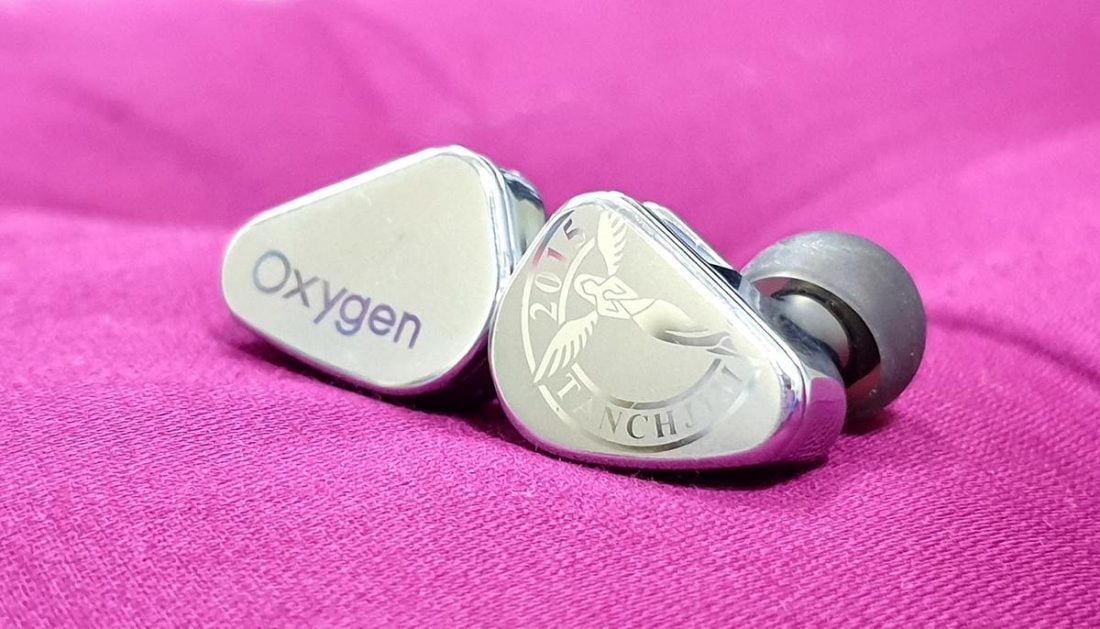
Design and Build Quality
The Oxygen has a simple, clean (there’s that word again) design, with stainless steel earpieces and sandblasted faceplates. The Tanchjim logo adorns the right faceplate while the word Oxygen is in the left. The shells are medium-sized with rounded-off edges, projecting a sense of calm and understated class. Or perhaps, the sterility of a laboratory.
As for build, the Oxygen is made of food-grade 304 stainless steel with a mirrored finish, like the Tin Hifi P1.
Both designers probably had a eureka moment while lunching.
The shells are solid and well-built, with uniform smoothness throughout, even at the seams. This is a design that will please many, and should last a long time.
Blemished and Famished
After a few months of use though, the flawless shells invited scratches and smudges, as evidenced in the photography. This is despite normal usage and keeping them in the carry-case when not in use. I don’t keep pets or rabid animals in the house either, just my family lol.
So the Oxygen is decidedly high-maintenance, like the ex-girlfriend who can tell fake Chanel.
Fit, Isolation, and Comfort
The Oxygen’s all-metal build, thankfully, has rounded edges throughout, so don’t worry about sharp edges poking where it shouldn’t be hehe. The earpieces slide into my ears without any fuss, although the short nozzles might prove worrisome. The ear tips provided are wide-bore, short and stubby, and, compounded by the short nozzles, is difficult to maintain a good seal.
The stock tips seal well when I’m seated and immobile, but when walking around the Oxygen tends to fall off my ears because of the poor seal. At moments like these, I turn to my Final Audio Type-E ear tips which provide maximum comfort and seal. I sound like an ad you can’t click away, but these tips really work for me.
What Privacy?
Isolation is not very good. Not only do you have to scuffle and tussle with the fit, the vented design of the Oxygen works against you too. This is not an IEM to bring outdoors unless you like the “ambient” function of true wireless earbuds. A lot of outside noise is heard, and you can see (hear?) why the Oxygen is mainly an IEM that stays indoors.
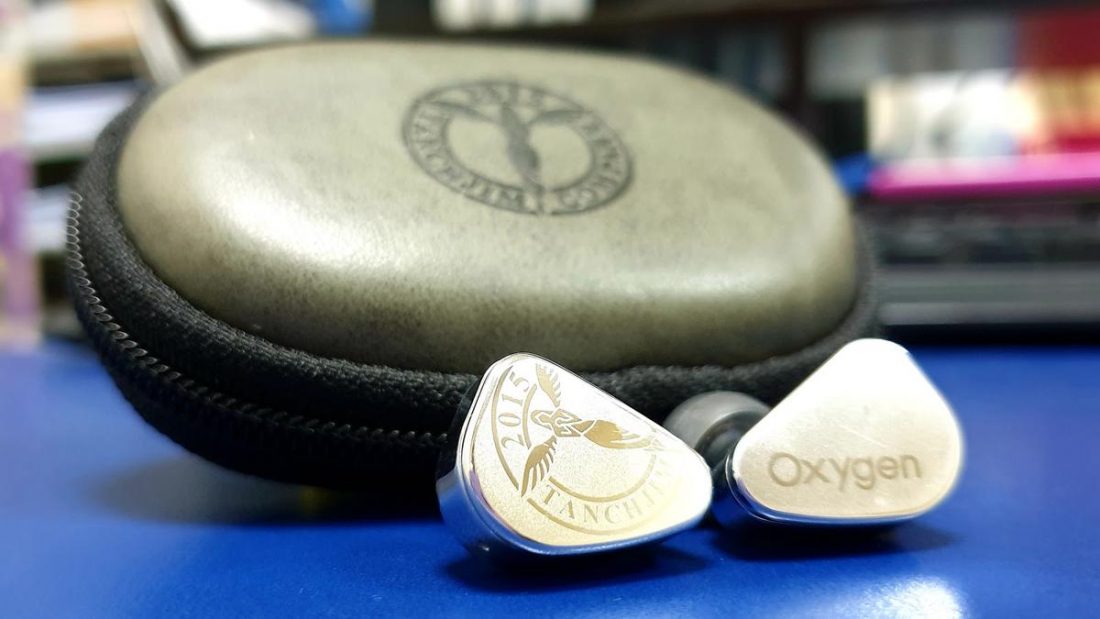
Sound Quality
For people who haven’t quite gotten the gist of reading a frequency response graph (that would include me), don’t despair, I have a whole section and plenty of words to describe the sound of these babies.
Overall Sound Signature
So if every IEM was Harman-neutral, would they all sound the same? Not necessarily so. The Harman curve only tells you the amounts of bass, mids, and treble in relation to each other. Other parameters like tone and timbre, soundstage size, imaging accuracy, and note characteristics cannot be measured. It also depends on the driver among other things.
A Creamy Dip
For the Oxygen, they’ve decided to go full Sade. Like her biggest hit “Smooth Operator”, the Oxygen aims to project smoothness and relaxation at every turn. Like drinking a quality smoothie, not those poorly-made ones with uncrushed ice at the bottom, which will land you in the hospital if you took a hard sip.
The inherent weakness among Harman-tuned IEMs are, manufacturers willingly follow a tuning template that should please most people. But when you think about it, does anything really? So critics of the Harman curve say the tuning follows an overly safe, inoffensive route, sort of like vanilla ice cream. It’s… nice, but hardly lands in anyone’s favorite lists, yeah? But let’s not put the Oxygen on the chopping block just yet.
Listening Conditions
Critical listening was done after 100 hours of burn-in, breaking down the thick and rigid graphene dynamic driver and reducing it to a delectable, beefy stock. The transients are a tad faster after burn-in but it could just be my mind messing with me. The main review rig is Sony’s NW-WM1A Walkman modded by Project K, using the stock cable.
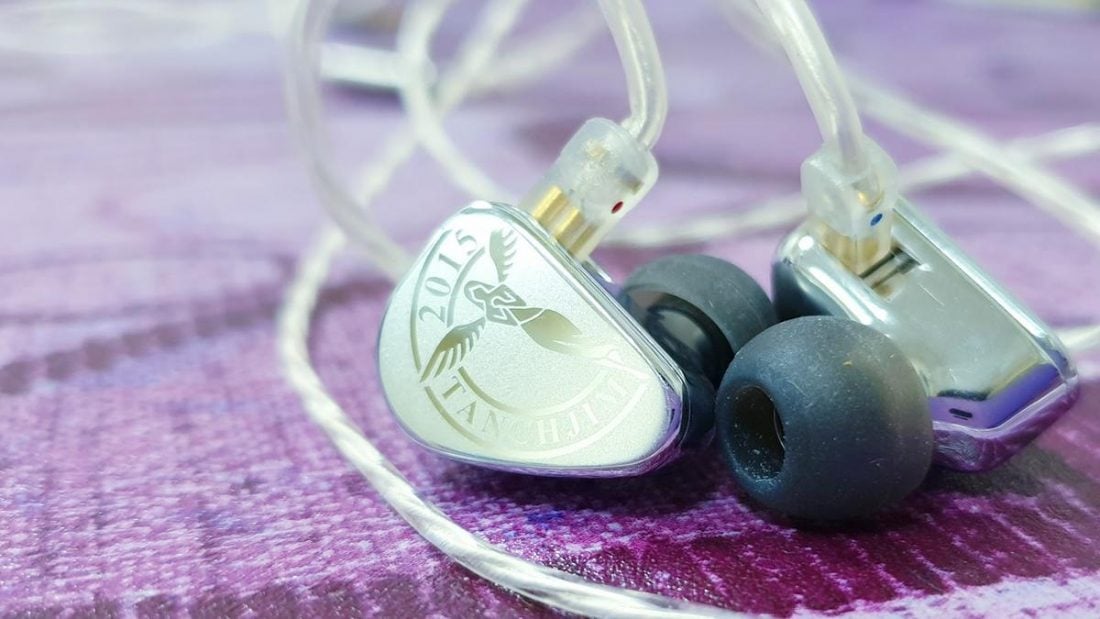
Bass
Speaking of vanilla ice cream, Oxygen’s sub-bass licks are tender, loving and gentle. Extension down below is excellent, with an audible thump and good rumble, like sitting on a massage chair who wants to get friendly. It’s not head-rattling nor overdone, which is nice. This is a well-behaved sub-bass that will please, surprise surprise, most people.
At the midbass, a mellow bloom lends warmth. Notes are rich and rounded, flowing from one to the next with good timbral accuracy. Attacks are smooth-edged and cut back on urgency, while decay takes its time. This is a warm, gooey and relaxed midbass that I wish would hit harder and faster. The slam isn’t satisfying enough, dynamics are subpar, and there is smearing in fast passages.
Sleepy Hollow
Moving up, the upper bass is de-emphasized, with a big scoop from here to the lower mids, which prevents bass bleed and increases airiness, but thins out the sound. The music seems uninvolved and lacks character, like drinking soup with too little salt. I want commitment and conviction! Overall, the sub-bass is worthy, and details and layering are decent, but the bass is let down by a weak punch and lean upper section.
Mids
Let’s start with the worst part of the mids, since there’s no escaping the specter of the upper bass to lower mids recession. The meat of the music may be in the mids, and here’s where it’s the boniest. The Oxygen renders male vocals, bass guitars and cellos with trepidation and hesitation, sounding reedy and nonchalant, and pushed back in terms of placement. This is the tardy kid of the signature.
Payback’s an Itch
From the middle mids, things get better, and finally, Oxygen gets his moment to shine. Your toes start tapping and jaw starts snapping, for the soul of the music is back. The center mids are so good they paper over the cracks and imperfections of the rest of the signature, sounding remarkably natural, organic and full-bodied.
Female vocals, guitars, and pianos sound enchanting and soulful, with a hint of speed. Notes are well-rounded and decay beautifully, imbuing a sense of air and fleet-footedness. This carries on into the upper mids, violins and brass instruments ring out with majestic bravado and supreme confidence. The timbre is spot-on and well-balanced, providing enough details to go with the euphony.
The highlight of the Oxygen is here, and the mids alone are worth the price of admission, helping you forget about past transgressions.
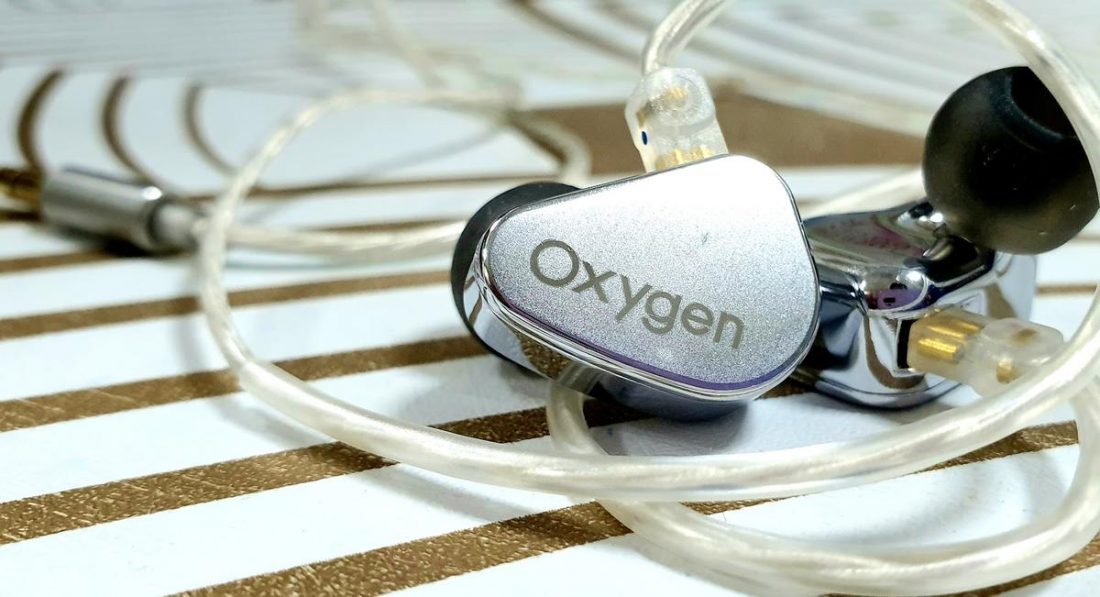
Treble
This is where you might want to ask for your money back. Listening to the treble is like a trip to the dentist, or Sade’s second-biggest hit “Tooth Operator”. The notes have no bite nor urgency, like a meal of porridge after losing a few teeth. It’s overly smooth and inoffensive, providing just a bit of shimmer at times, but averse to risk and perhaps, rewards.
Toothless Aggression
No doubt, timbre is still quite good, with a natural and realistic tone from the lower to middle treble. But with excitement levels akin to wearing socks with flip-flops, it’s hard to be aroused or enthused by the sonic equivalent of warm drinking water. It’s no surprise the treble leaves the party early too, as the extension levels fall short and the signature lacks airiness up top.
This is a treble tailor-made for mild-mannered people who veer on the safe side of everything, who dip their toes into the pool and return indoors. Some will find this agreeable, but for me, it’s an aid for curing insomnia. A good tone but devoid of transparency, air, details, and most of all, energy.
Soundstage and Imaging
Like Sade’s third-biggest hit “Booth Operator”, the Oxygen’s soundstage size felt boxed-in and intimate. It wasn’t impressive in terms of width, depth and height, providing an on-stage feel with the musicians surrounding you in a game of musical chairs. The music surrounds your head, sometimes entering it, providing little breathing space despite being named Oxygen.
Imaging and separation do much better. Anchored by the winsome mids which take centerstage, imaging cues are precise throughout the X and Y-axis. While the smearing in the midbass prevents a thoroughly clean and airy stage, the Oxygen does enough to immerse the listener in the music, aided by the small soundstage in fact.
You feel like you’ve just booked a private, one-on-one session with your favorite musicians.

Comparisons
FiiO FH5
At the gates, my $300 benchmark awaits. The FH5 has a detailed, exciting W-shaped signature that is the direct antithesis to the calm, smooth and if I may, bland Oxygen. I won’t pretend to be unbiased, because FH5 possesses one of my favorite tunings, and I’m struggling to reason why you should get the Oxygen when the FH5 is available for nearly the same price.
If we look at the sound characteristics, FiiO’s mid-tier hybrid has more visceral sub-bass, punchier and tighter midbass than the Oxygen. Crucially, the treble is crisper, airier and a magnitude more detailed. These are the most obvious changes, but what a glaring difference they make to the sound, injecting pace, rhythm, urgency and most of all, a sense of fun to the mix.
Suckerpunched
Looking at technical ability, the FH5 is more extended in both ends, with a sharper attack, swifter decay, and much better note definition and transparency across the board. The FH5 is clearer, hits harder, and handles music with more finesse. The Oxygen is made to eat humble pie and like it.
The Oxygen doesn’t go home empty-handed and get some nice party gifts. The mids are a tier above in terms of tone and timbre, while the imaging is more accurate. But mids alone can’t save the signature when the FH5 is obviously a better all-rounder. Their both shared weaknesses are the lower mids dip and a small soundstage, but taken as a whole, consider Oxygen’s butt well and truly owned.
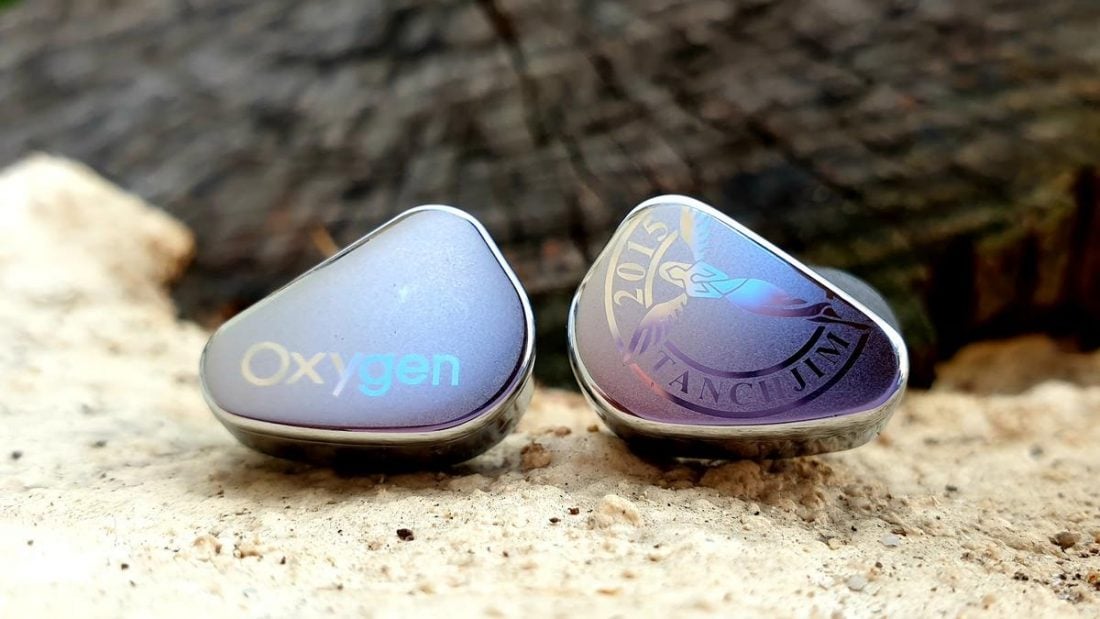
FiiO FA7
The previous battle was inexplicably one-sided, but what about lesser opponents? The FA7 takes a similar route as the Oxygen, going for a warm, luscious sound that is gentle on the ears and high on emotion. Both IEMs weave some mondo mids magic to entice and enchant our gullible hearts and wallets, so this should be on more of an equal footing.
So across a warm climate and template, they are evenly-matched. Oxygen boasts a more robust, thumpy sub-bass, chugging away at the bottom while FA7 is better-extended and more energetic in the treble region. FA7’s mids are more liquid and dense, like thick maple syrup, but Oxygen manages the same arresting tone while sounding more nimble and airy.
The Imperfect Beasts
The slugfest continues and spills all over the arena. FA7 has a bigger soundstage but Oxygen has sharper imaging. Oxygen has a more solid build but FA7’s accessory package is better equipped. Their main weaknesses, Oxygen’s lower mids dip and FA7’s midbass hump are equally infuriating, robbing both IEMs of greatness.
This is a battle of the flawed titans with no clear winner. That being said, both are equally suitable for prolonged, non-fatiguing listening sessions with beautiful mids, so pick your poison.
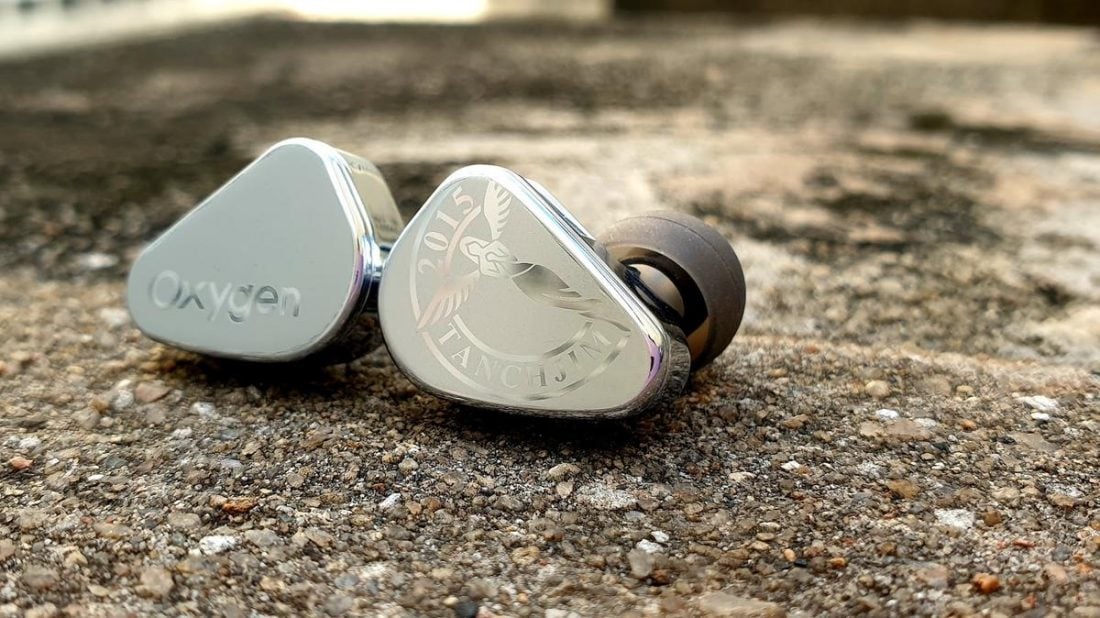
Final Words
Sometimes, all I need is the air that I breathe and to love you. The Harman target curve has the noble intention to elevate tuning expertise as a whole, by providing a usable blueprint for manufacturers to follow. It’s like publishing a recipe for a foolproof, fail-proof soup stock so nobody would ever have to make do with bad soup again.
No Soup for You
Of course, recipes can be followed to the letter, or you can take several liberties with them and call them your own. Tanchjim chose to tune their flagship with a beautiful tone in mind, and for all intents and purposes, they’ve succeeded. The Oxygen, available from Apos Audio, has a tone to fall headfirst in love with. Even when taking into account its weaknesses, you have to admit, nothing is jarringly wrong with the tuning.
Yes, you can pepper the sound with more excitement, the bass could be meatier and more wholesome, but given the chance, the Oxygen stands on its own as a well-implemented take on the Harman tuning. And this, my friends, is just the beginning. With more and more companies tweaking and releasing their own version of the Harman signature, this might just be the new mainstream.
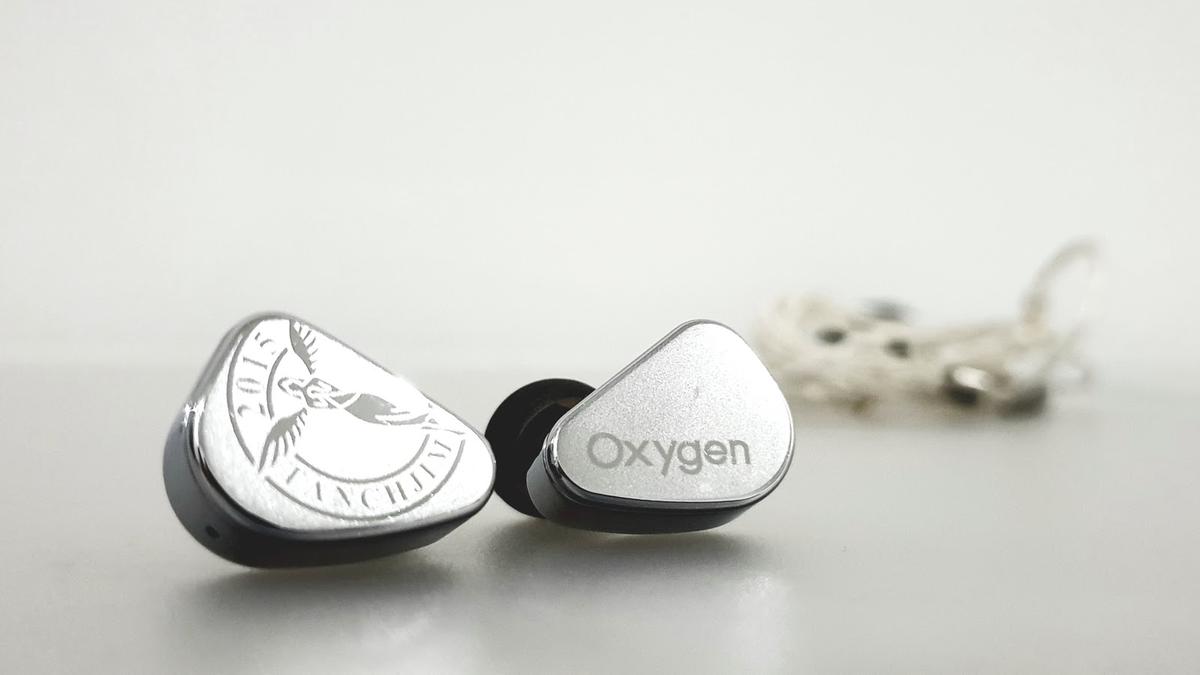
What is the best earphone in the world for iphone? (Below 500 dollars)
This is funniest IEM review I read in a while – “Tooth Operator”.
Strangely Crinacle gives the Oxygen very high marks, hmm(?) for measurement part.